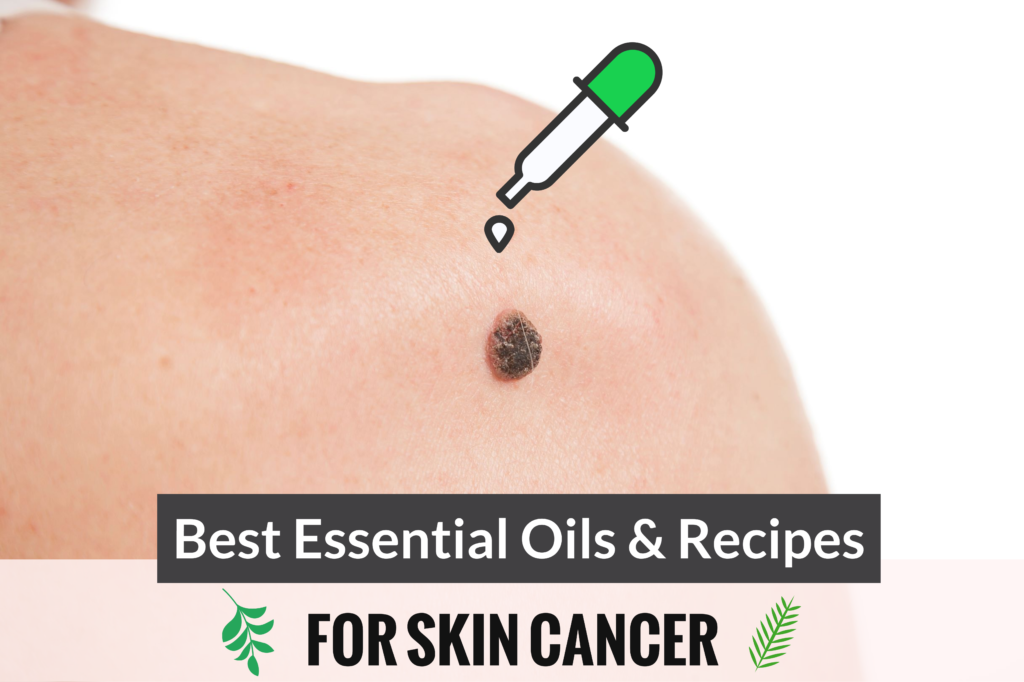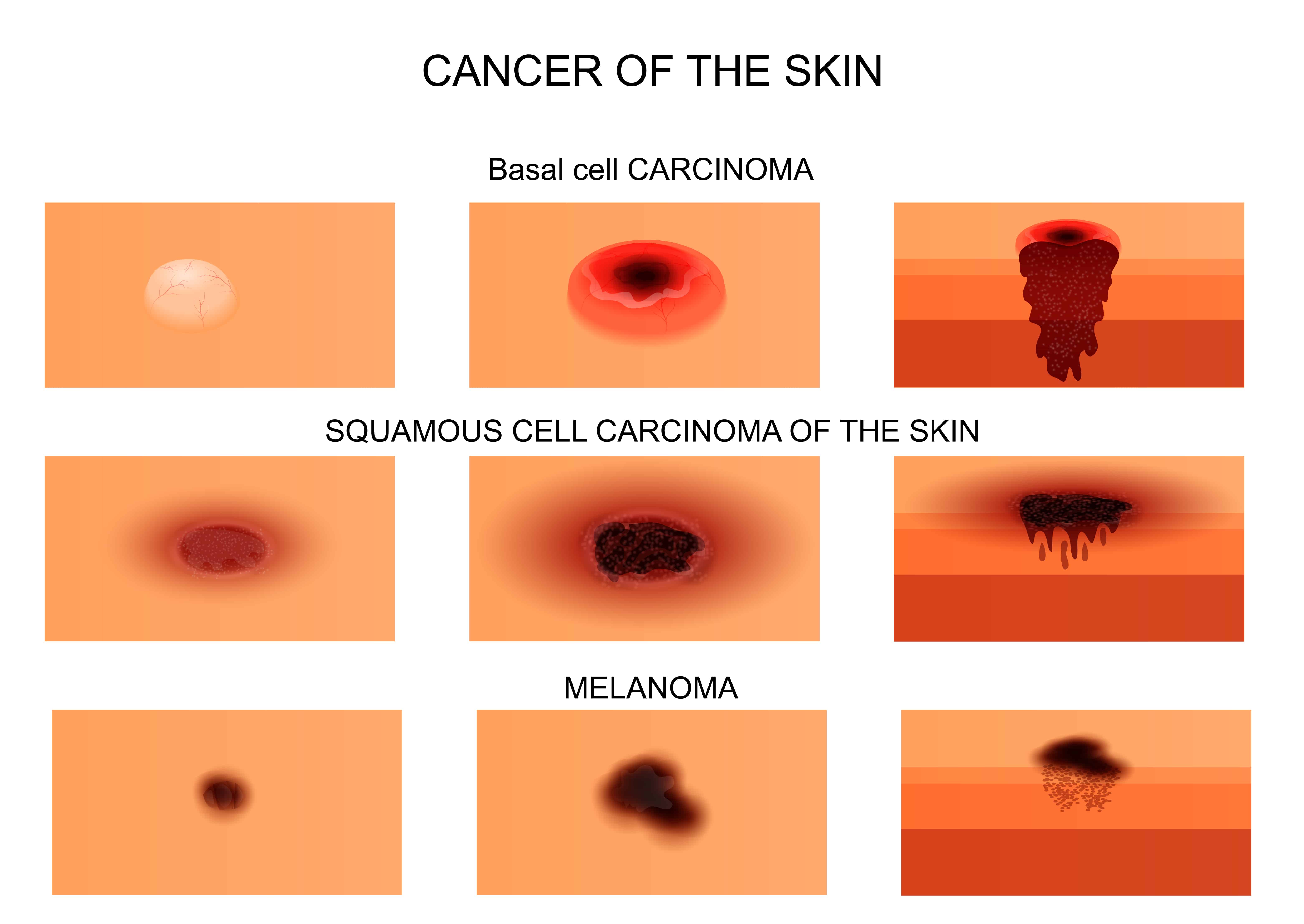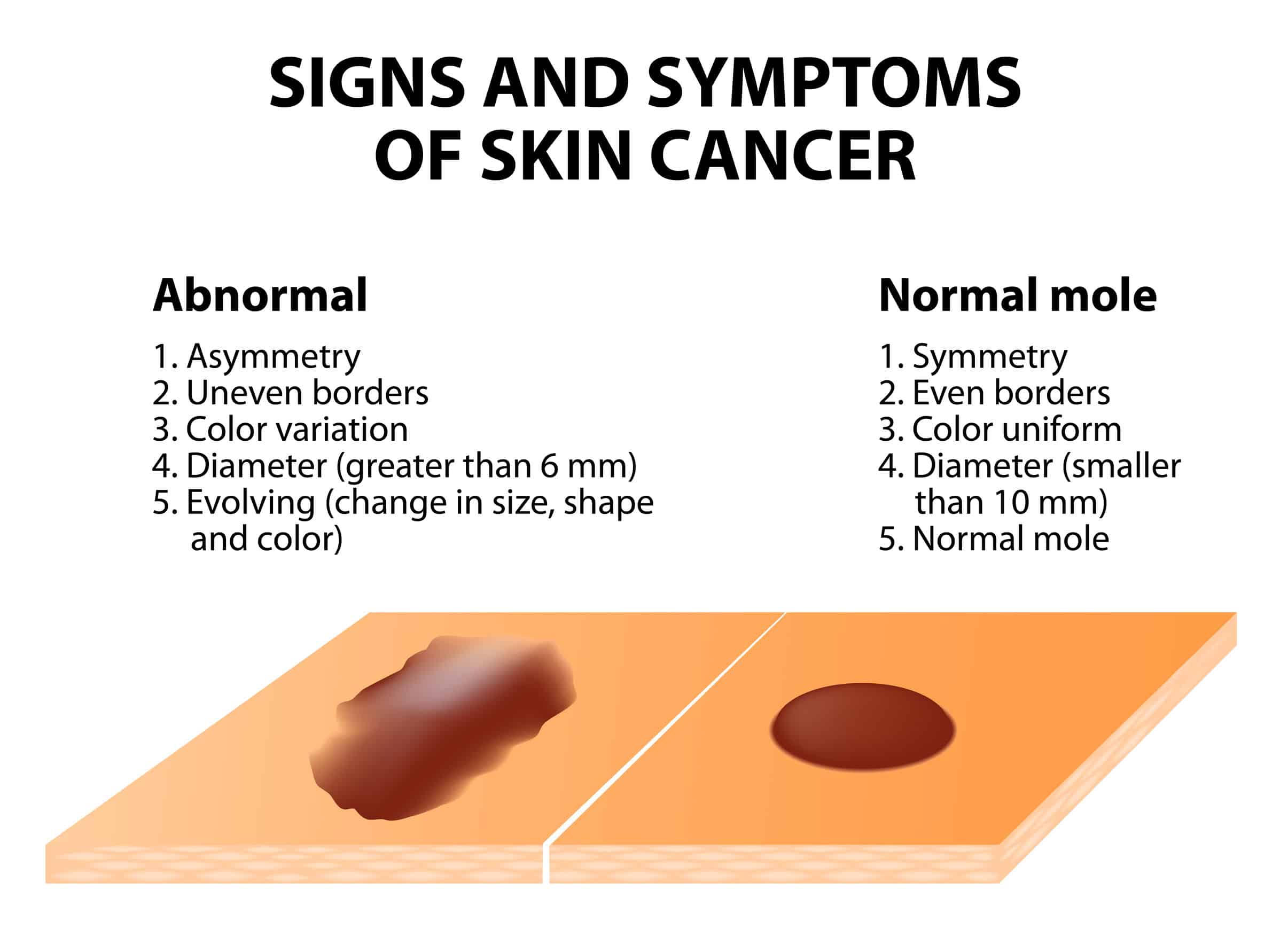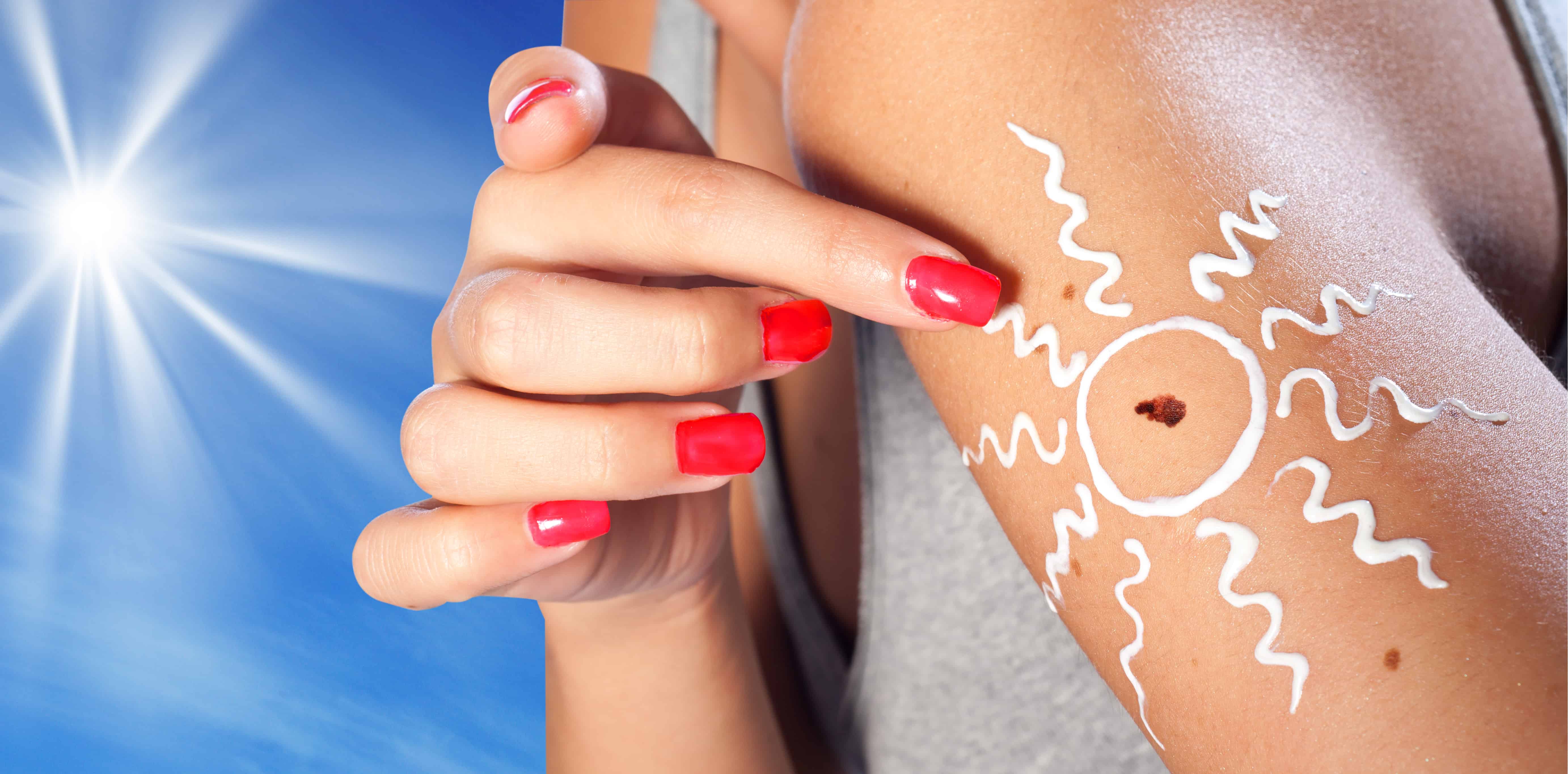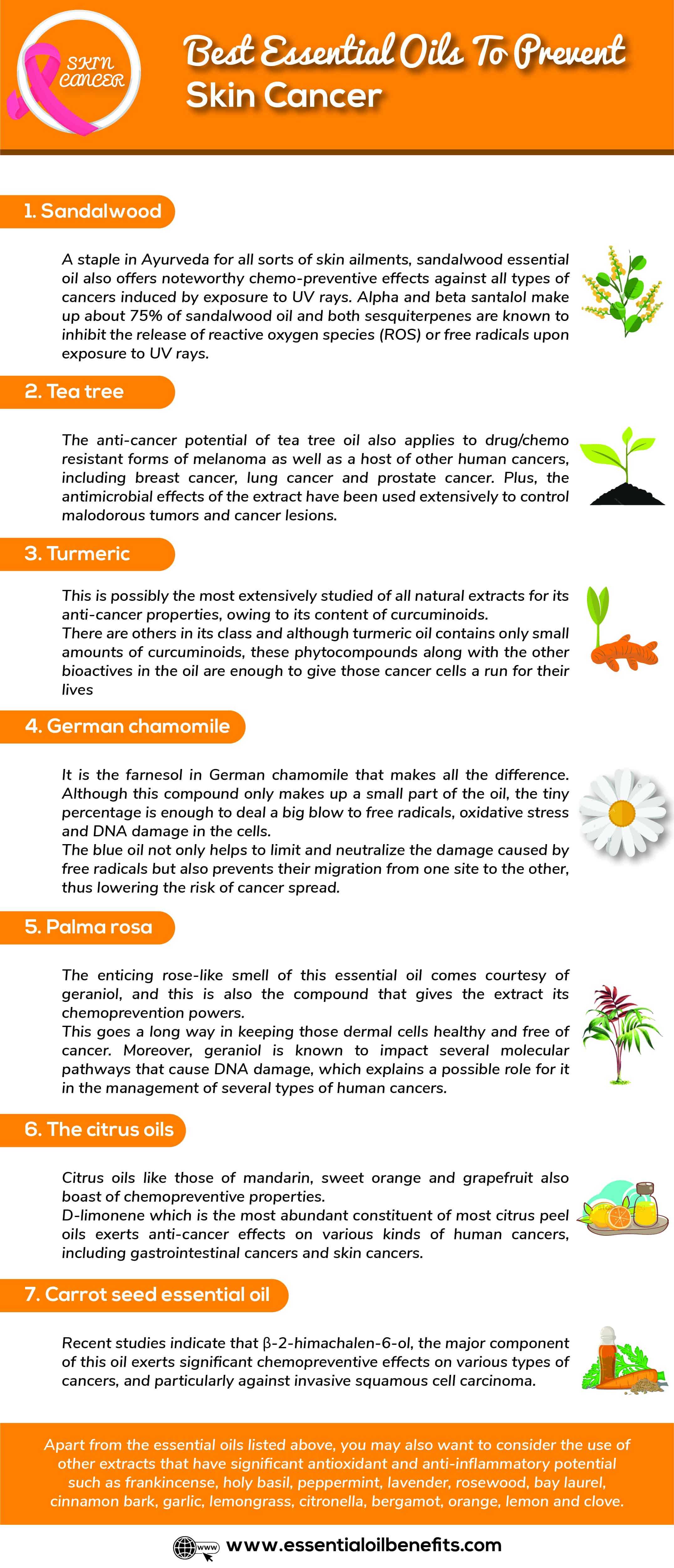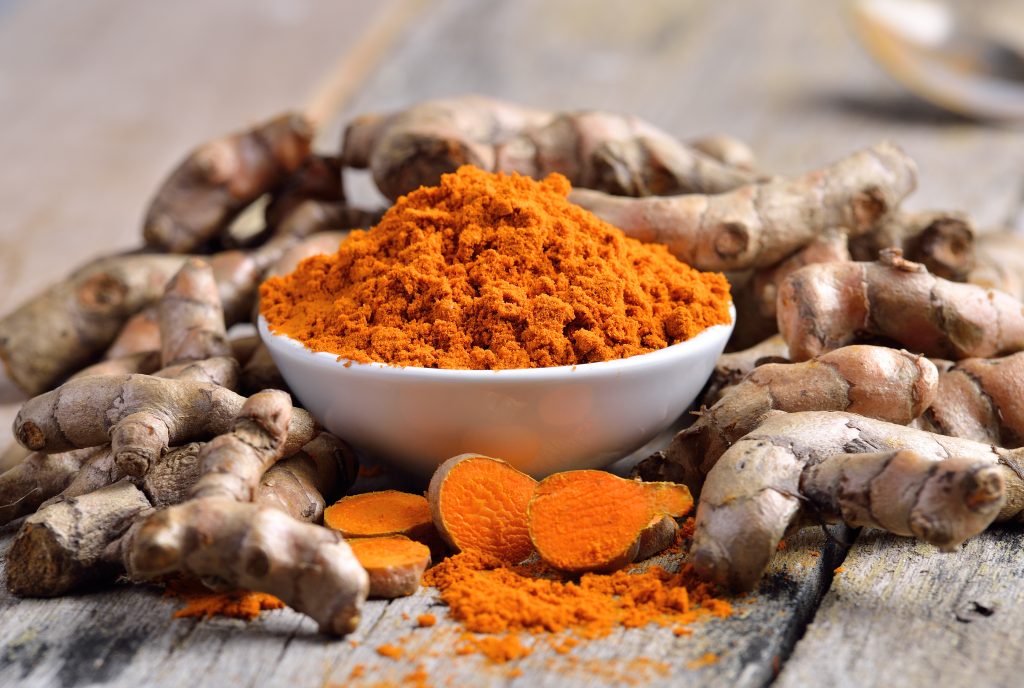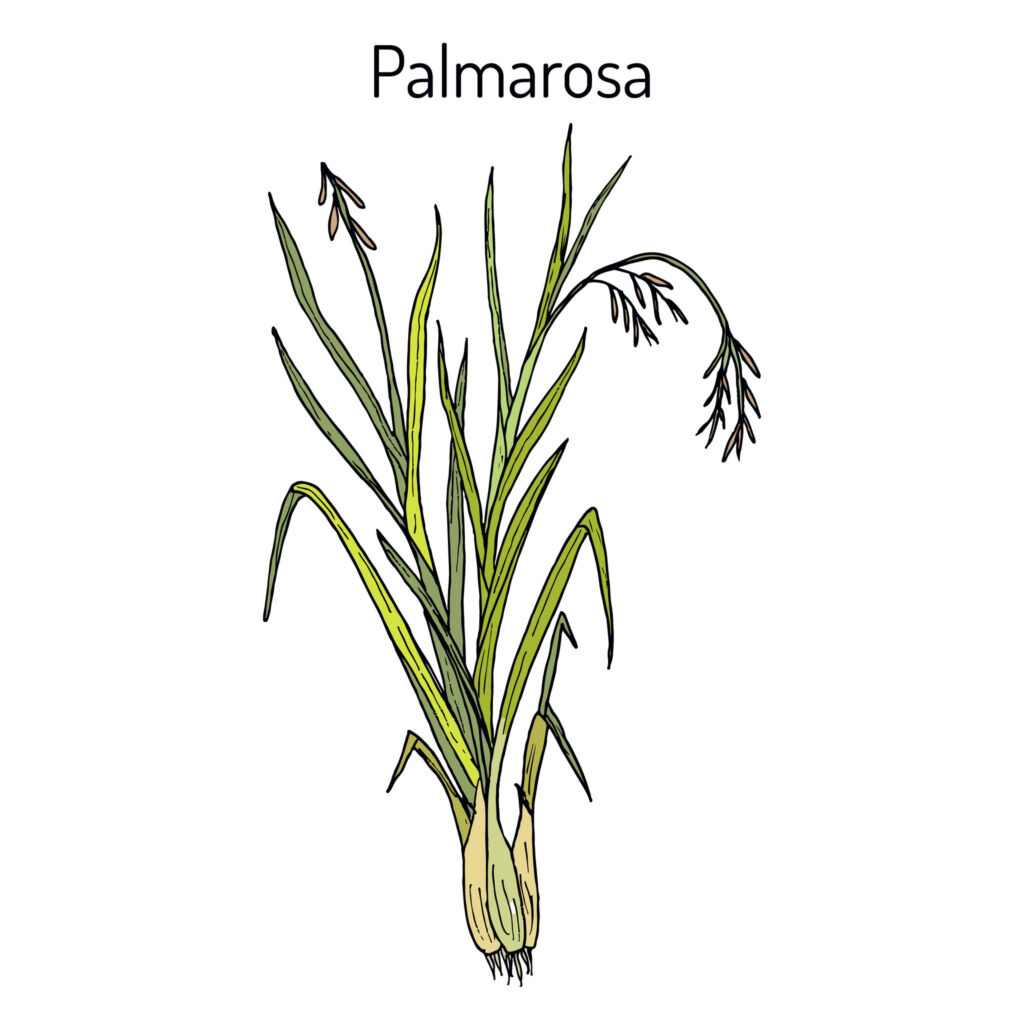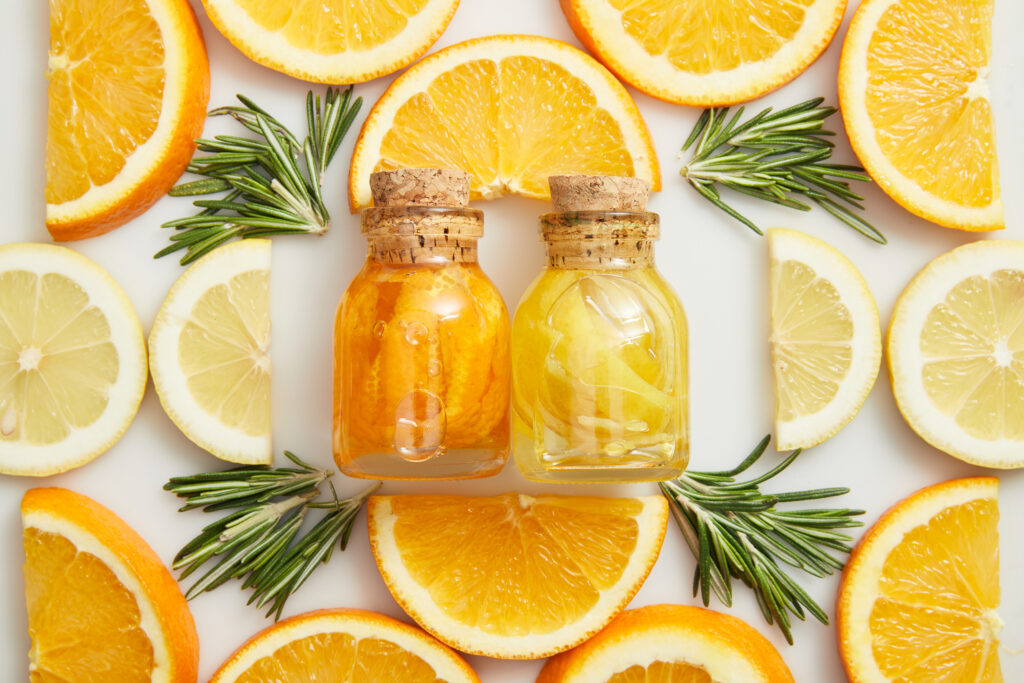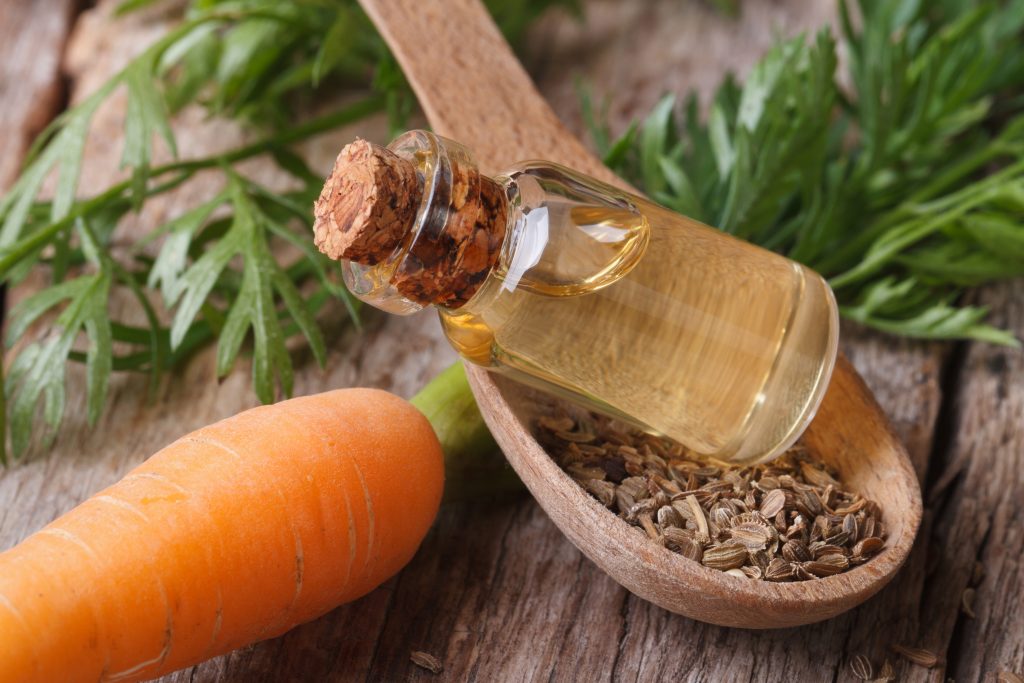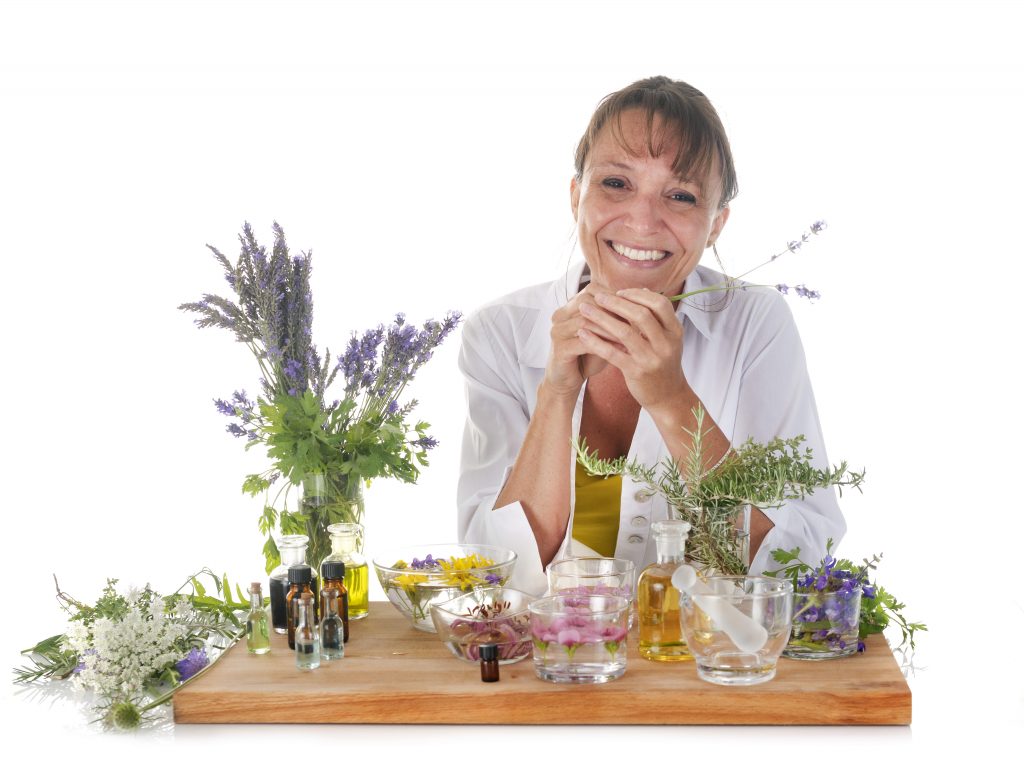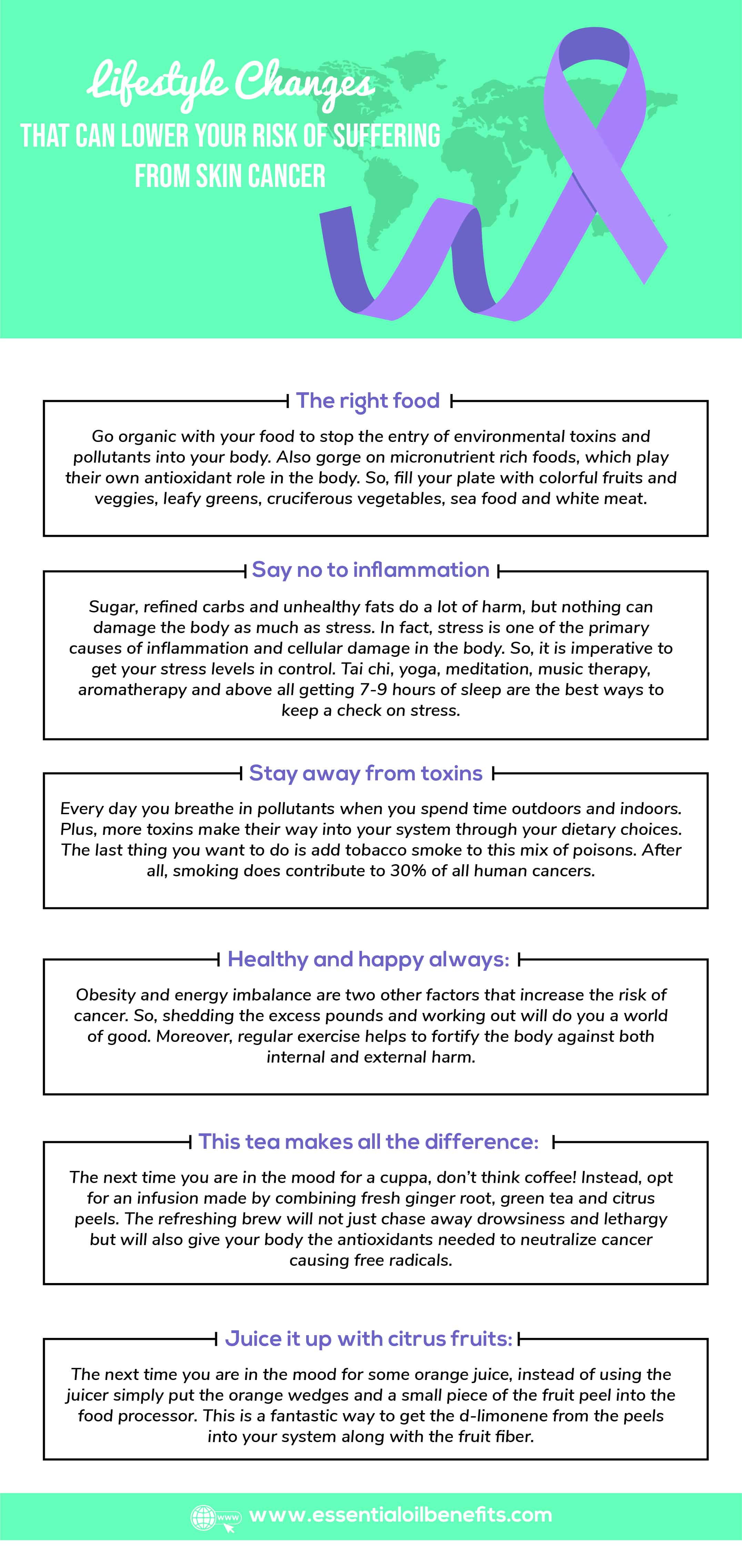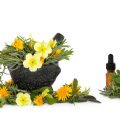The thing about skin cancer is that it’s very easy to spot and almost always starts in areas of the body that can be seen even without a mirror. Moreover, two of the three most common forms of skin cancer are highly treatable. Yet, this danger that lurks in plain sight ends up killing nearly 15,000 Americans every year.
Why you wonder? Simple, 95% of skin cancers can be treated completely if they are diagnosed early on. However, if the ailment is left undiagnosed and untreated, it quickly spreads to the other organs and gets harder to treat.
In fact, early diagnosis of skin cancer is so important that May has been designated as the National Skin Cancer Prevention and Detection Month. Although some people have a higher risk of suffering from the condition, the fact is that anybody can get skin cancer; men and women, children and seniors and people of all ethnicities. Prevention and early detection are your best bet in winning a war against this disease.
So in the spirit of early diagnosis, my dear Oliviaites let’s get to know everything there is to know about skin cancer. To make this an easy read, I have divided this article into four sections:
- All you need to know about skin cancer
- Can essential oils help to prevent skin cancer?
- Is there a role for essential oils in the treatment of skin cancer?
- How can essential oils be used by skin cancer survivors?
As always, we will get to know the condition before we start discussing how essential oils can help. So, without further ado, let me get to the first question of the day:
What Is Skin Cancer?
An abnormal and uncontrolled growth of dermal cells, skin cancer is the most common of all human cancers, so much so that nearly 10,000 Americans are diagnosed with the condition everyday. This is a superficial form of cancer that starts in the epidermis in 99% of the cases.
But make no mistake; the cancer will spread if left unchecked and once it gets deeper into the body, things get bleaker. For instance, even with melanoma, early detection offers a five year survival rate of almost 98%.
However, the optimistic figure takes a big plunge to stop at just 62% once the cancer reaches the lymph nodes, and it drops to a mere 18% the minute other organs are drawn into the tornado of cancer.
Unlike other forms of cancer in which the cause is either unknown or ill understood, exposure to UV rays is implicated in nearly 90% of all skin cancers. And it’s not just the sun we are talking about here; tanning beds are almost as bad. Let’s talk a bit more about the notorious UV rays.
The sun produces three types (differ in terms of their wavelength) of ultraviolet rays (UV rays):
- UVA: Form the highest UV component of sunlight, as 95% of UVA make it to the surface of the earth. They cause a tan that does not offer sun protection and the rays make it past the deepest layer of the epidermis (the basal layer) and to the dermis and are responsible for skin aging.
- UVB: More damaging than UVA rays, only about 10% of UVB make it to the earth. They also cause tanning, which offers minimal sun protection (about SPF-3). UVB reach the top and the middle layers of the epidermis and is responsible for sunburns.
- UVC: Is completely filtered by the ozone layer in most areas.
Tanning beds emit UVA rays but not UVB. Consistent exposure to UV rays causes damage to the DNA in the skin cells and leads to the oxidation of the nucleus of these cells.
UV rays also result in immune suppression or anomalies and hyper generation of free radicals in body. In fact, exposure to UV rays continues to cause oxidative stress in the skin cells well over 24 hours later. So, even when you get out of the sun, your skin cells continue to take one hit after another.
Dermal cells are the most vulnerable to DNA damage and nucleotide oxidation when they are in the process of division and regeneration. Think of DNA as a tiny program that tells your cells how to grow and when to grow. When this program gets corrupted, a mutation occurs, which leads to the abnormal growth of cells.
And, that is cancer!
So, can that mole on my arm be skin cancer?
Yes, it can be! Every year more American are diagnosed with skin cancer than all other forms of cancer put together. Here are some more figures that will serve as eye openers and prove to you why you and everybody else around you is at risk.
- More than 20% of Americans (1 in 5) will suffer from skin cancer by the time they hit their 70th
- Most cases of skin cancer occur in the age group of 44 to 55 years.
- Melanoma is more common in men than in women.
- Instances of non-melanocytic cancers have increased by a whopping 77% between 1994 and 2014.
- Organ transplant patients have a 100 times greater risk of suffering from skin cancer (squamous cell carcinoma)
Understanding Skin Cancer
Exposure to UV rays causes genetic damage to the dermal cells. But, not all cells get hit at once. So, depending on the cells involved in the cancer, there are 3 main types of the condition.
1. Basal cell carcinoma (BCC):
This type of skin cancer has the highest occurrence rate, with nearly 4 million new cases diagnosed in the US each year. Although it accounts for almost 68% of all skin cancers in the country, it’s the least dangerous form of the condition. Extreme exposure to UVA rays is thought to be the cause of BCC as it involves cells in the basal layer/deepest layer of the epidermis, and only UVA rays penetrate that deep into the skin. The cancer presents itself as slow growing nodules or papules and sunburns may/may not be a factor.
This non-melanocytic cancer is very common in people with fair skin and history of UV ray exposure and very rare in those with dark skin tones. The risk of spread of this form of cancer to other parts of the body is extremely rare, but it can cause significant damage to the skin if not treated in time and may even lead to facial disfigurement.
2. Squamous cell carcinoma (SCC):
Also a non-melanocytic skin cancer, the cells in the top layer of the epidermis, the squamous cells start growing out of control in this condition. Because UVB rays get to this layer of the epidermis, they are thought to cause the genetic mutation that leads to the condition.
Nearly 28% of all skin cancers are squamous cell carcinomas and although the condition is not life threatening, it can take on an aggressive form and spread to large areas of the skin and even other parts of the body. SCC can develop in any part of the body, including the inside of the mouth, on the genitals and near the anus.
It starts as a raised or flat sore or a red nodule. Although fair skin and history of sun exposure are the primary causes, those with a weakened immune system also have a high risk of suffering from this form of skin cancer.
3. Melanoma (MSC):
Of the three, this is the least common (just 3% of all skin cancers) but the deadliest form of the condition. It is estimated that over 7,000 Americans will lose their lives to melanoma in 2019. Moles, family history, sun exposure, genetic risks, weakened immune system and skin type are all risk factors for this type of skin cancer. Melanoma starts in the melanocytes, which are the pigment producing cells in the skin.
UVB rays and the sunburns they cause are thought to be the primary causes of MSC. The condition presents itself as a new mole/moles or as a change to existing moles. MSC is considered non-invasive when it is restricted to the middle layers of the epidermis.
However, once it penetrates deeper and reaches the dermis, the condition becomes invasive with a very high risk of spread to the other parts of the body. Melanoma can develop even in those areas of the body that are not typically exposed to the sun like inside the eyes or underneath the nails, in/around the belly button, on the scalp and on the soles of the feet.
Skin Cancer Symptoms
Here are some of the symptoms of skin cancer.
1. For BCC
- A persistent sore that bleeds, oozes, crusts and heals only to make a reappearance after a few weeks.
- Sudden appearance of a reddish patch/patches that may be itchy and hurt or cause no discomfort.
- A shiny nodule that may be clear, white, pinkish red, tan, brown, black.
- A pinkish growth with a raised, rolled border.
- A bump with blood vessels on the surface.
- A pimple-like growth that does not go away.
- A scar-like patch that may be white, yellow or waxy, which appears without any injuries/abrasions.
- Growth or patch with a poorly defined border and a waxy, taut, shiny appearance.
- Raised and reddish patches that are itchy or hurt.
2. For SCC
- Red, scaly patches that have a rough surface feel and itch, crust and bleed.
- Raised lumps with a depressed center that show rapid growth.
- Wart-like nodules that bleed and crust.
- Flat sores that don’t heal.
- Patches with irregular borders that are scaly and bleed/crust.
3. For MSC
- A brownish spot with dark speckles/visible blood vessels.
- Changes in the color, size, texture or behavior of an existing mole.
- A mole that bleeds (new or existing).
- A black/brown/darker lesion that is painful and bleeds.
- A small lesion, flat or raised, with poorly defined borders and several color variations in it (bluish-black, bluish, brown, tan, reddish, pinkish or white).
- Dark lesions on unusual areas of the body like in between the toes, on the palms or the soles, on the mucous lining of the mouth, anus or vagina and inside the belly button
Skin Cancer Risk Factors
We have already discussed the role that UV rays play in triggering skin cancer but just to put things in perspective, here are a few figures. Almost 99% of all non-melanoma cancers and 95% of melanoma cancers are attributed to cumulative damage caused by UV rays. Just one episode of sunburn every 2 years can increase your risk of suffering from melanoma by 3 times. Other risk factors include:
- Light skin that tans poorly and burns easily.
- Fair skin with freckles.
- Light hair (blond or red) and light eyes (blue, grey, green).
- Occupational or recreational exposure to sunlight (men who play golf, occupations that involve spending time outdoors).
- History of sunburns early in life (childhood).
- Several episodes of sunburns in the past.
- Using tanning lamps and beds.
- Living at high altitudes that have sunny weather.
- A lot of moles on the body.
- A family history of cancer, particularly skin cancer.
- A personal history of cancer and/or skin cancer.
- A compromised immune system.
- Recipients of organ transplant.
- Radiation treatment for cancer or skin problems.
- Arsenic toxicity.
- Exposure to environmental toxins.
- Certain bacterial and viral infections.
Diagnosing Skin Cancer
The first thing that the doctor will do is examine the sores/moles/nodule. If the skin changes are out of the ordinary, you will have to go through a biopsy. This is a minor surgical procedure that involves the removal of the suspicious tissue.
This can be done in a number of ways. The doctor may only remove a part of the suspicious tissue or get it completely out. This can be done by shaving it off with a sterile razor, using a punch or by cutting out a part or whole of the growth.
The extracted tissue is then sent to the lab for testing. It simply involves observing the tissue under a microscope to find anomalies in the cells. Based on the type and size of the cancer, the doctor will recommend the further course of action. Additional testing may also be needed and will include a CT scan, MRI imaging test and biopsy of the lymph node.
Treatment can be limited to a complete excision or removal of the cancerous growth if it’s BCC or SCC in the initial stage. But if the cancer has spread, radiation and/or chemotherapy is needed to destroy the growth.
Treating Skin Cancer With Essential Oils
Even the medical community now acknowledges that chemoprevention has a huge role to play in controlling the cancer pandemic. And, this is the area in which essential oils have a lot to offer. Let us not forget that oxidative stress is a part of the skin cancer equation and essential oils have an unparalleled ability to neutralize free radicals.
So, instead of waiting for skin cancer to bust through the door and then dealing with the intruder, why not be proactive and take the fight to the cancer causing factors. Here are a few essential oils which will help you to do just that.
Best Essential Oils To Prevent Skin Cancer
1. Sandalwood
A staple in Ayurveda for all sorts of skin ailments, sandalwood essential oil also offers noteworthy chemo-preventive effects against all types of cancers induced by exposure to UV rays. Alpha and beta santalol make up about 75% of sandalwood oil and both sesquiterpenes are known to inhibit the release of reactive oxygen species (ROS) or free radicals upon exposure to UV rays.
Plus, sandalwood essential oil is incredibly soothing on the skin and helps to deal with the chronic inflammation that results from exposure to UV rays and oxidative stress.
2. Tea tree
You probably know this one as an acne cure, but the oil from the famed Melaleuca alternifolia tree has so much more to offer. Tea tree oil has already been studied for its effect on human cancer cells and it was found that the extract helps to kill cancer cells and stops them from migrating to other parts of the skin and other organs of the body.
The anti-cancer potential of this oil also applies to drug/chemo resistant forms of melanoma as well as a host of other human cancers, including breast cancer, lung cancer and prostate cancer. Plus, the antimicrobial effects of the extract have been used extensively to control malodorous tumors and cancer lesions.
3. Turmeric
This is possibly the most extensively studied of all natural extracts for its anti-cancer properties, owing to its content of curcuminoids. You may have heard about the famed curcumin, which is often hailed as the super antioxidant.
Well, there are others in its class and although turmeric oil contains only small amounts of curcuminoids, these phytocompounds along with the other bioactives in the oil are enough to give those cancer cells a run for their lives. Actually, you can rely on this oil to hunt down and kill the lil suckers!
4. German chamomile
You may already know about chamazulene, the component that gives this oil its blue color. This compound has extraordinary anti-inflammatory properties. While these help, for chemoprevention, it is the farnesol in this oil that makes all the difference.
Although this compound only makes up a small part of the oil, the tiny percentage is enough to deal a big blow to free radicals, oxidative stress and DNA damage in the cells. The blue oil not only helps to limit and neutralize the damage caused by free radicals but also prevents their migration from one site to the other, thus lowering the risk of cancer spread.
5. Palma rosa
The enticing rose-like smell of this essential oil comes courtesy of geraniol, and this is also the compound that gives the extract its chemoprevention powers. For starters, the phytocompound is an effective anti-inflammatory agent and a powerful antioxidant.
Even on their own, these properties go a long way in keeping those dermal cells healthy and free of cancer. Moreover, geraniol is known to impact several molecular pathways that cause DNA damage, which explains a possible role for it in the management of several types of human cancers.
6. The citrus oils
Who does not enjoy the titillating aroma of citrus oils; the perfect combination of sweet and sour with just a touch of fruity is one of the best pick me ups. The good news is that citrus oils like those of mandarin, sweet orange and grapefruit also boast of chemopreventive properties.
D-limonene which is the most abundant constituent of most citrus peel oils exerts anti-cancer effects on various kinds of human cancers, including gastrointestinal cancers and skin cancers. Plus, this compound acts synergistically with several bioactives found in other essential oil and improves their penetrability through the dermal layers.
6. Carrot seed essential oil
You will often find this oil in anti-aging formulation for its ability to smooth out fine lines and wrinkles. Recent studies indicate that β-2-himachalen-6-ol, the major component of this oil exerts significant chemopreventive effects on various types of cancers, and particularly against invasive squamous cell carcinoma.
Well folks, it’s not just essential oils that can help in your fight against skin cancer, carrier oils can provide just as much help if you make the right choice.
For instance, sesame seed oil, with its content of sesamol and pomegranate seed oil have shown notable chemopreventive effects against skin cancer. In addition, you can also use the antioxidant effects of flaxseed oil and black seed oil to ensure that cancer never comes knocking on your door.
Apart from the essential oils listed above, you may also want to consider the use of other extracts that have significant antioxidant and anti-inflammatory potential such as frankincense, peppermint, lavender, rosewood, bay laurel, cinnamon bark, garlic, lemongrass, citronella, bergamot, orange, lemon, basil and clove.
Top Essential Oil Recipes/Blends To Prevent Skin Cancer
1. No oxidative stress, no cancer blend
This blend is very simple to make and use, and it is one of the best ways to stop both internal and external free radicals before they create trouble: You will need:
- 30 ml sesame seed oil
- 5 drops mandarin
- 7 drops German chamomile
- 4 drops sandalwood
- 2 drops each ginger and turmeric
Method:
Mix the oils and store the blend in an amber/blue glass bottle. To use, apply all over your body, including on the face, underneath the sunscreen.
The thing to understand here is that this blend will add to the protective value of your sunscreen and is not a replacement for it. So, apply 15 minutes before your slather on your sunscreen. If you need to reapply your sunscreen, use this blend first and then layer your sunscreen on top of it.
2. Post exposure blend
What if you have already had ample of sun exposure in the past or were not as diligent as you should have been with the use of your sunscreen?
Even if no sunburns result from your slip up, rest assured that the UV rays will have done plenty of damage and will continue to do so for hours later. But, using this blend will stop the damage that comes after UV exposure. This is what you need:
- 30 ml pomegranate seed oil
- 10 ml flaxseed oil
- 7 drops turmeric
- 4 drops rosewood
- 9 drops lavender
- 5 drops peppermint
- 6 drops grapefruit
Method:
Preparation and storage as above. Apply on all the sun exposed areas of the body after a shower. Allow the oils to work on your sun ravaged skin all through the night. Follow the routine for at least a week after intense/continuous sun exposure.
3. Stop sunburns from wreaking havoc on your skin
While sunburns are very obvious in people with fair skin, those with darker complexions may only experience itching and burning instead of the blistering. As far as the peeling is concerned, that comes later! But make no mistake, regardless of your skin tone and symptoms, a sunburn heaps the same amount of insult on dark skin as it does on lighter skin.
In fact, belief to the contrary is what puts people with darker skin tones at risk. So, it is no wonder that SCC, which is linked to UVB exposure (these are the rays that cause sunburns) is the most common type of skin cancer in African Americans. So, if intense sun exposure has left you with burning blisters or with incessant smarting and itching, here is a blend that can offer quick relief and damage free healing. This is what you will need:
- Aloe vera gel ½ cup (homemade or preservative free if store bought)
- 2 tbsp matcha
- 1 tsp black seed oil
- 2 drops tea tree
- 4 drops palma rosa
- 3 drops sandalwood
- 4 drops each peppermint and lavender
Method:
Mix the matcha with the aloe vera gel. You are going for a thick, syrup-like mixture. In a small bowl mix the oils and add this blend to the aloe vera and matcha mixture. Stir vigorously till you get a homogenous paste. Matcha acts as the binding agent here that keeps the oils and the aloe vera gel together.
So, if you see oil droplets in the mixture, add a few pinches of matcha more and mix well. This should help to mix the oils with the gel better. You will have to store this mixture in the refrigerator and you will get a shelf life of 1 month from it.
If you want more, freeze it and give it an hour to thaw before use. Apply on the damaged parts in a thin layer and allow it to dry on your skin. Wash it off after 4-5 hours with regular water. Reapply as needed till the burning/itching/blisters don’t subside. Then use, once a day for at least 15 days after the symptoms have subsided.
4. A healing bath that soothes the skin and stops cancer
This healing bath works particularly well for those who have a high risk of suffering from skin cancer; cumulative sun exposure related skin damage; early life history of sunburns and those who have already suffered from skin cancer.
- A cup of fresh rosemary (run it in the food processor for 4-5 minutes)
- A tsp of milk
- 10 drops each turmeric and sandalwood
- 15 drops German chamomile
- 8 drops carrot seed
- 7 drops each frankincense and lavender
Method:
Mix the oils and store in a dark glass bottle. Add 5 drops of the blend to a teaspoon of milk (plant or dairy) and set the mixture aside. Run a hot bath (but not if you have sunburns more on this later) and add the rosemary puree to the water. Give the herb a few minutes in the hot water and then pour the milk-oil blend into the tub. Soak yourself in the bath for 20 minutes.
If you have sunburns, add two cups of water to the rosemary puree and simmer for 2-3 minutes. Take the mixture off the stove and add to a bathtub filled with room temperature water. The other steps are as above.
5. The quick healing blend
If you have gone through a biopsy for cancer diagnosis or treatment, here is a blend that will bring about quick healing, limit the risk of scarring and hunt down any cancer cells that may have escaped the purge. You will need:
- 15 ml sesame seed oil
- 15 ml pomegranate seed oil
- 5 drops turmeric and sandalwood
- 4 drops lavender
- 2 drops ginger
- 8 drops German chamomile
Method:
Mix the oils and store in a dark glass bottle. After a scab forms on the wound, apply the blend with a Q-tip on the treated area. Use twice a day for 2 weeks.
6. No more cancer shower blend
This recipe combines the healing and anti-cancer powers of both herbs and essential oils. It can be used after cancer treatment and as a preventative measure. You will need:
- 2 cup raw honey (manuka)
- 2 tbsp milk thistle herb powder
- 2 tbsp matcha
- 1 tbsp calendula herb powder
- 1 tsp magnolia bark extract
- 1 tbsp neem leaves powder
- 1 tsp flaxseed oil
- 3 drops each peppermint and ginger
- 2 drops clove
- 7 drops Helichrysum
- 5 drops lime
- 10 drops palma rosa/ 5 drops rose
Method:
Mix the powders with the honey to make a thick paste without any lumps in it. Blend the oils in a small bowl. Add this blend one drop at a time to the herb and honey mixture, while stirring continuously. Store in a dark glass jar, away from direct exposure to light and heat. You don’t have to refrigerate the blend.
To use, take 1-2 tbsp of the mixture and use it as you would a body wash but without the loofah. Simply remove the paste with your fingers and rub it on your skin. You can use it once a day on its own or replace your body wash with this blend. Remember to not introduce water into the stored mixture or it will mold.
Using Essential Oils While Going Through Cancer Treatment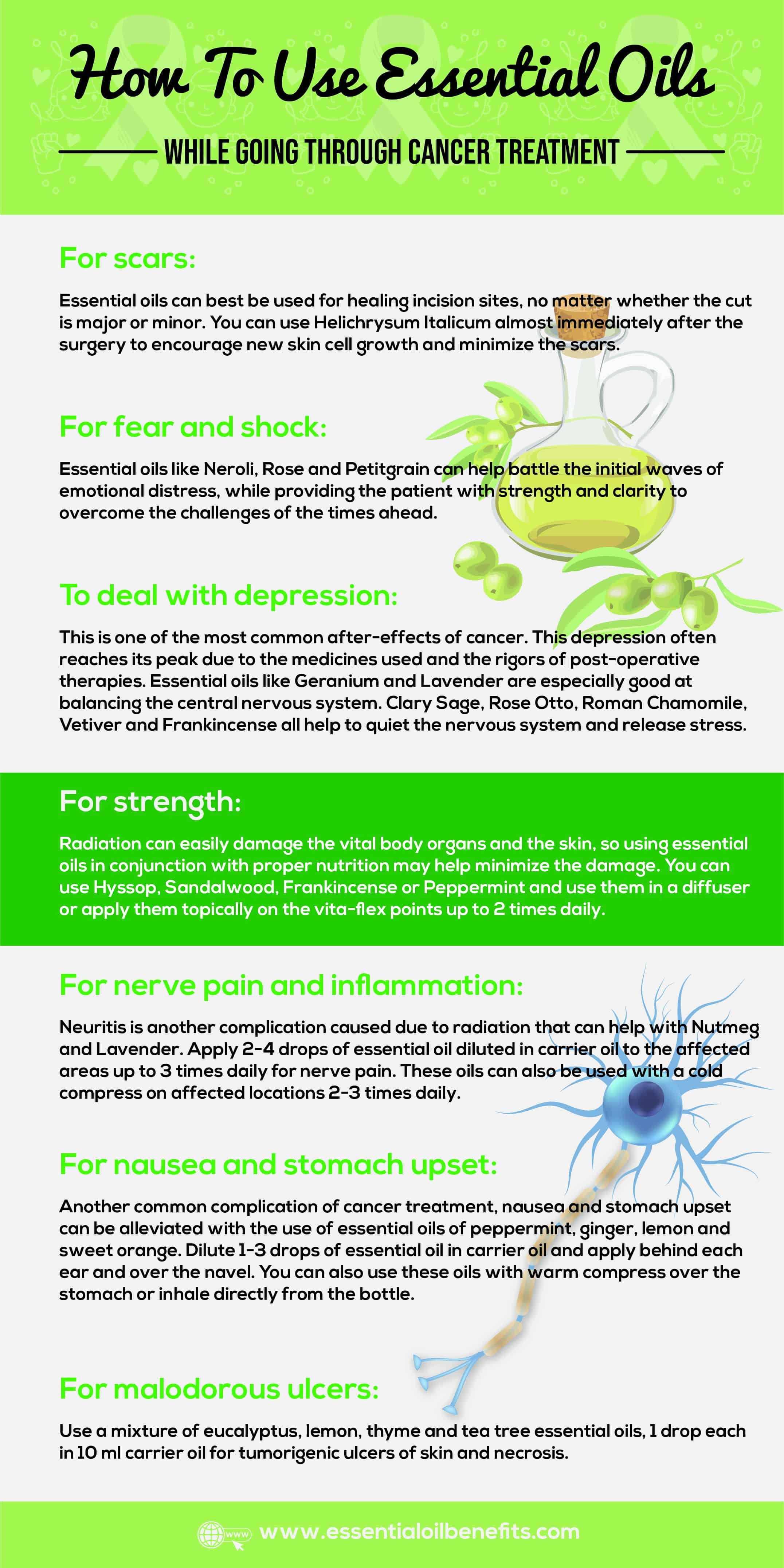
For scars: Essential oils can best be used for healing incision sites, no matter whether the cut is major or minor. You can use Helichrysum Italicum almost immediately after the surgery to encourage new skin cell growth and minimize the scars.
For fear and shock: Essential oils like Neroli, Rose and Petitgrain can help battle the initial waves of emotional distress, while providing the patient with strength and clarity to overcome the challenges of the times ahead.
To deal with depression: This is one of the most common after-effects of cancer. This depression often reaches its peak due to the medicines used and the rigors of post-operative therapies. Essential oils like Geranium and Lavender are especially good at balancing the central nervous system. Clary Sage, Rose Otto, Roman Chamomile, Vetiver and Frankincense all help to quiet the nervous system and release stress.
For strength: Radiation can easily damage the vital body organs and the skin, so using essential oils in conjunction with proper nutrition may help minimize the damage. You can use Hyssop, Sandalwood, Frankincense or Peppermint and use them in a diffuser or apply them topically on the vita-flex points up to 2 times daily. You will find more info on using essential oils for energy here.
For nerve pain and inflammation: Neuritis is another complication caused due to radiation that can help with Nutmeg and Lavender. Apply 2-4 drops of essential oil diluted in carrier oil to the affected areas up to 3 times daily for nerve pain. These oils can also be used with a cold compress on affected locations 2-3 times daily.
For nausea and stomach upset: Another common complication of cancer treatment, nausea and stomach upset can be alleviated with the use of essential oils of peppermint, ginger, lemon and sweet orange. Dilute 1-3 drops of essential oil in carrier oil and apply behind each ear and over the navel. You can also use these oils with warm compress over the stomach or inhale directly from the bottle.
For malodorous ulcers: Use a mixture of eucalyptus, lemon, thyme and tea tree essential oils, 1 drop each in 10 ml carrier oil for tumorigenic ulcers of skin and necrosis.
Essential Oils: Their Scope In The Treatment Of Skin Cancer
Several essential oils and their individual phytoconstituents have demonstrated the ability to:
- Promote and speed up the natural/programmed death of cancer cells (apoptosis)
- Stop the proliferation of the cells and the DNA damage to other parts of the skin and the body (antiproliferative).
- Poison cancerous cells without harming normal cells in any way (cytotoxic).
Yet, the use of essential oils as a possible treatment for any kind of cancer in humans, including skin cancer has not even reached the stage of infancy. Now, there are two reasons for this:
- When you are dealing with essential oils the therapeutic benefits never come from just one or two specific compounds in the oil. It’s the mix of various compounds that yields the desired effect. Unfortunately, the quantity of these phytochemicals can vary depending on the geographical location and conditions of harvest. So, unlike a drug an essential oil may/may not always yield identical results when used to treat a condition like skin cancer that offers little room for error.
- The above factor can be circumvented to a great extent by putting in place stringent quality control measures. But let’s get real while the big pharma lobby is always ready to sponsor studies and trials of their new drug, essential oils don’t get any such support. So, although these extracts have proven their merits in several studies, all the tests were conducted on rodent subjects or human cells in a petri dish but not an actual human subjects who are suffering/have suffered from cancer.
Yes, there is anecdotal evidence to support the efficacy of these oils. But cancer is an unforgiving and relentless ailment; not something to be fooled around with nor treated on a trial and error basis. I am sorry to state this as an example but case in point of this fact is Steve Jobs, who had a highly curable form of cancer and yet died from it because he chose to rely solely on natural treatment modalities.
I don’t know if essential oils were a part of his treatment but all I can say is that in the interest of your own safety, I highly recommend that you do not use essential oils or any other natural substance or methodology as the only treatment for your cancer.
In fact, if you are currently undergoing traditional cancer treatment (chemotherapy/radiation therapy), talk to your doctor before using any supplement/herb/essential oils or any man-made or natural substance internally or externally. Even nutrients like vitamin A and C are known to interfere with traditional cancer treatment and you don’t want that happening.
So, err on the side of caution and clear the use of all supplements, vitamins, micronutrients, herbs, essential oils (except when used for aromatherapy/diffusion) with your doctor. Having said that, for information only, here are the results of some of the studies that have pointed to the effectiveness of essential oils in treating skin cancer:
- Common sage essential oil has shown antiproliferative activity against human melanoma cells
- Rosewood essential oil has exhibited the ability to induce cell death (apoptosis) in human epidermal carcinoma cells.
- Salvia bracteata and Salvia rubifolia essential oils have shown cytotoxic properties against human melanoma cells.
- Bay laurel essential oil was found to be cytotoxic for amelanotic melanoma cells.
- Spanish/French lavender (Lavandula stoechas) essential oil demonstrated cytotoxicity towards human epidermoid carcinoma.
In addition to these, essential oils were found to be effective against skin cancer in several studies that involved animal subjects. So, yes we are looking at a scope for use of these oils in skin cancer treatment in the future. But for now, it is safe to use them as an adjunct or complementary therapy after consulting with your doctor.
Lifestyle Changes That Can Lower Your Risk Of Suffering From Skin Cancer
The right food: Go organic with your food to stop the entry of environmental toxins and pollutants into your body. Also gorge on micronutrient rich foods, which play their own antioxidant role in the body. So, fill your plate with colorful fruits and veggies, leafy greens, cruciferous vegetables, sea food and white meat.
Say no to inflammation: Sugar, refined carbs and unhealthy fats do a lot of harm, but nothing can damage the body as much as stress. In fact, stress is one of the primary causes of inflammation and cellular damage in the body. So, it is imperative to get your stress levels in control. Tai chi, yoga, meditation, music therapy, aromatherapy and above all getting 7-9 hours of sleep are the best ways to keep a check on stress.
Stay away from toxins: Every day you breathe in pollutants when you spend time outdoors and indoors. Plus, more toxins make their way into your system through your dietary choices. The last thing you want to do is add tobacco smoke to this mix of poisons. After all, smoking does contribute to 30% of all human cancers.
Healthy and happy always: Obesity and energy imbalance are two other factors that increase the risk of cancer. So, shedding the excess pounds and working out will do you a world of good. Moreover, regular exercise helps to fortify the body against both internal and external harm.
This tea makes all the difference: The next time you are in the mood for a cuppa, don’t think coffee! Instead, opt for an infusion made by combining fresh ginger root, black tea and citrus peels. The refreshing brew will not just chase away drowsiness and lethargy but will also give your body the antioxidants needed to neutralize cancer causing free radicals.
Juice it up with citrus fruits: The next time you are in the mood for some orange juice, instead of using the juicer simply put the orange wedges and a small piece of the fruit peel into the food processor. This is a fantastic way to get the d-limonene from the peels into your system along with the fruit fiber.
Simple Precautions That Will Help You Lower Your Skin Cancer Risk!
- Avoid sun exposure during late morning and afternoon hours. The sun’s rays are the most intense between 10 AM and 4 PM.
- A cloud cover or even winter weather offers no protection from UV rays. In fact, weather has little impact on the intensity and amount of radiation that reaches the ground. So, always have your sunscreen on.
- Use sunscreen every time you are outside during the day and reapply it every 2 hours. You need at least SPF-30 for overall sun protection.
- Don’t just limit the application of your sunscreen to your face. Use it on all sun exposed areas of the body and be generous with your use. Normally, it takes about ½ tsp of sunscreen to offer the specified degree of SPF.
- You will need to reapply your sunscreen if you perspire a lot and after swimming, most products, even those which are water resistant, will lose some of their SPF if they are exposed to water/sweat.
- While sunscreen does provide overall protection from UV rays, regardless of the product you pick, it is a hardly a complete solution. If you have already suffered from skin cancer or have a high risk of suffering from it, you may want to consider the use of photoprotective clothing.
- Even if you are not in the two categories mentioned above, keeping your arms and legs covered and face protected with a broad-brimmed hat will help.
- Avoid tanning beds, which can be almost as dangerous as sun exposure.
- Some skincare products and medication can increase the sensitivity of your skin to UV rays. For instance, any product that exfoliates your skin and some antibiotics can increase your sun sensitivity.
- No change in your skin is trivial or small enough to not merit your attention. Play it safe and have your doctor check it.
- In addition, spend some time in self-examination every 15-30 days. Glance over every inch of you, using a mirror where needed.
Natural Therapies That Can Be Used As An Adjunct To Traditional Skin Cancer Treatment
At this time, there are no natural therapies/alternative therapies for the treatment of skin cancer. However, complimentary therapies which can be used alongside of traditional cancer treatment do help a lot. For instance,
- Hypnosis, meditation and aromatherapy massage can be used for anxiety.
- Acupuncture, acupressure, aromatherapy diffusion and music therapy help with pain.
- Exercise, yoga, tai chi and massage can be used for stress relief.
- Relaxation techniques help to deal with sleep problems.
- Yoga, music therapy and aromatherapy massage and diffusion can help against fatigue.
The Final Word
Skin cancer or melanoma is known to be the most serious and aggressive form of skin cancer. A mere mention of this word is giving me goose bumps as I have known many people who have suffered from this dreadful disease.
If you haven’t personally been diagnosed with cancer, odds are high that you have been part of a support system for someone who has, at least once in your life. Cancer of the skin is universally seen and its outbreak is ever-increasing.
The good news is that skin cancer is not a life threatening cancer and all types of skin cancers are curable should they be treated in early stages. It is noted that essential oils can be of tremendous help in the management of skin cancer. These natural oils are able to address the different stages of this condition if right oils are used and right treatment methods are followed.

